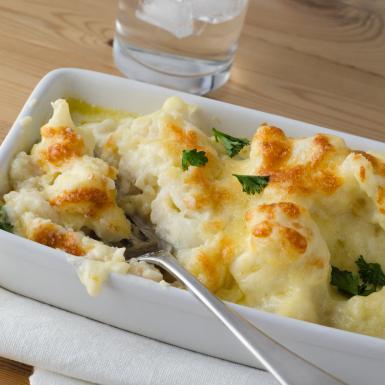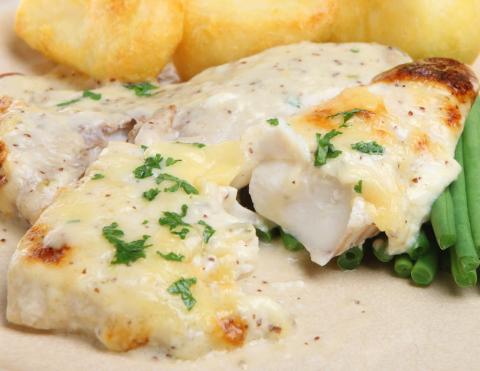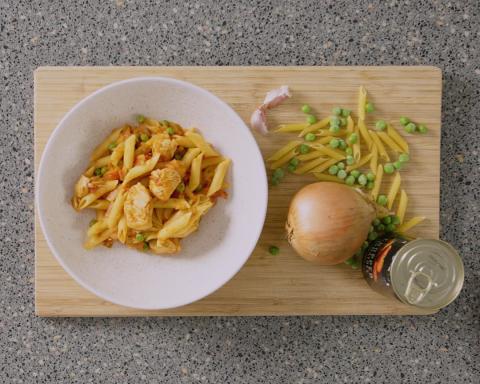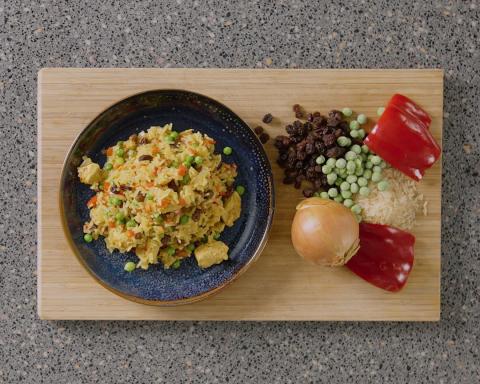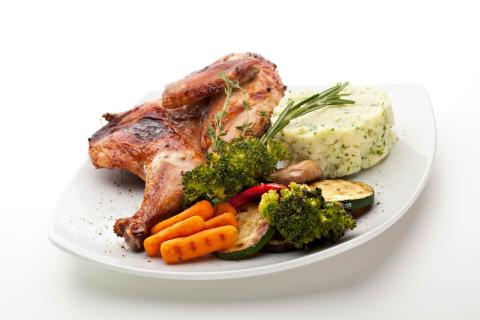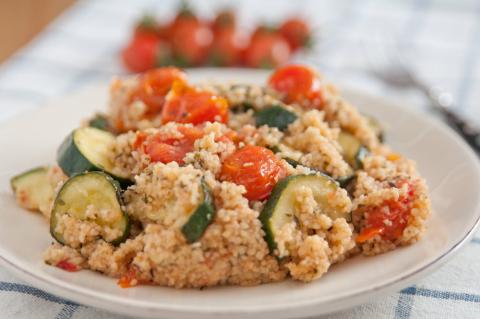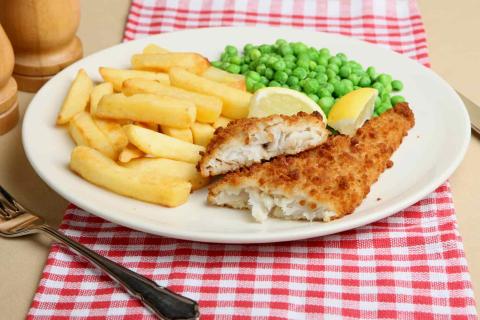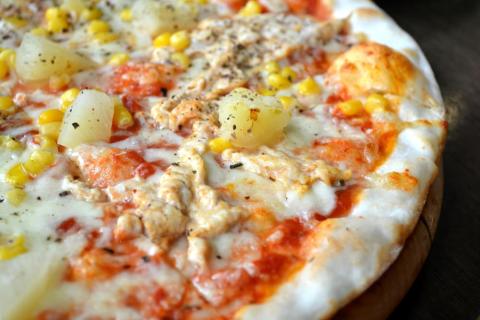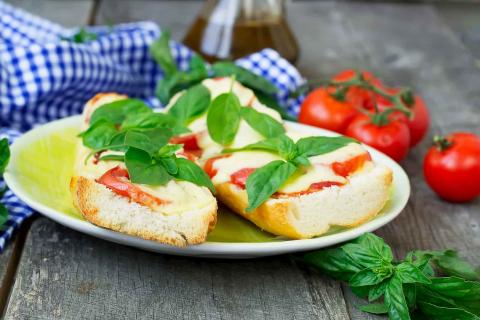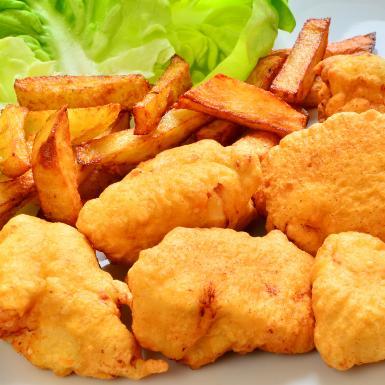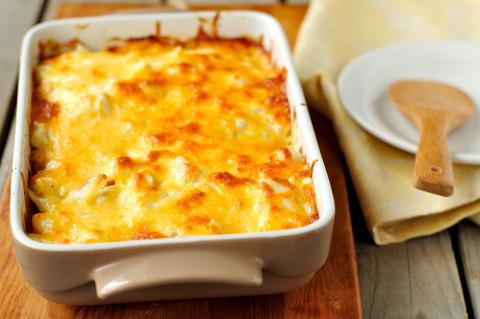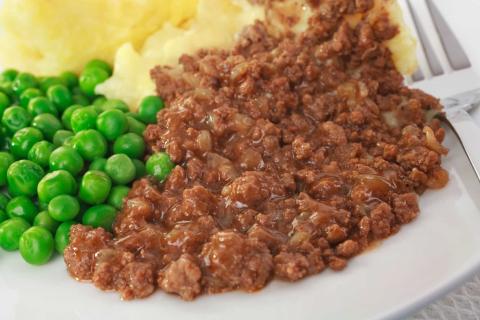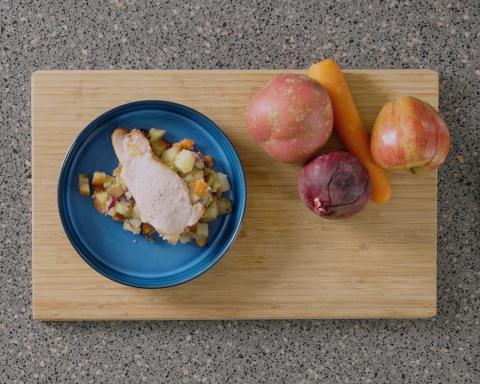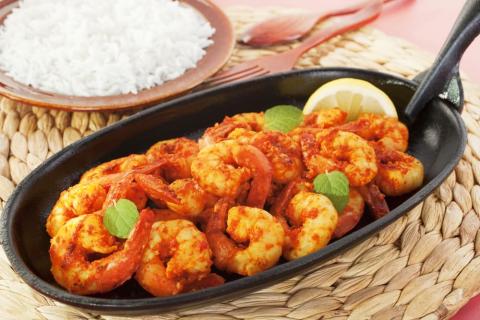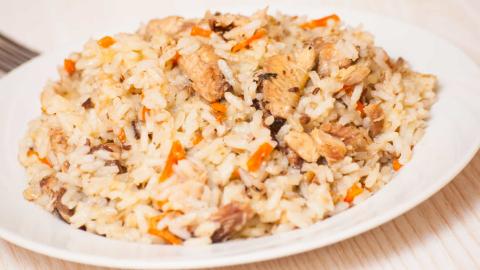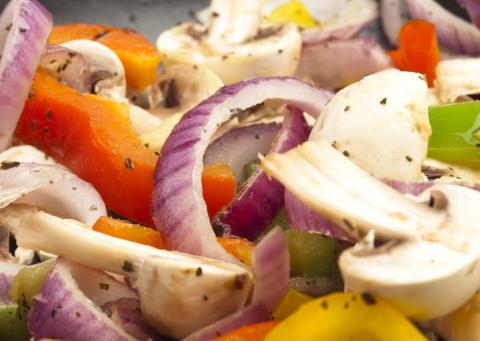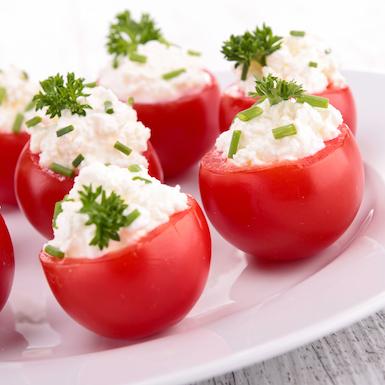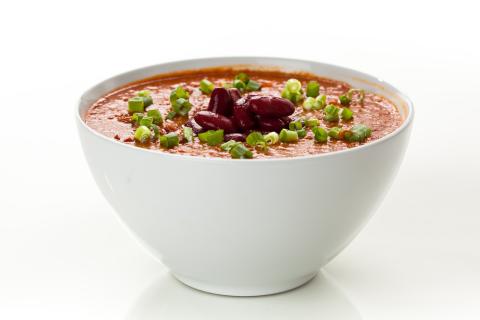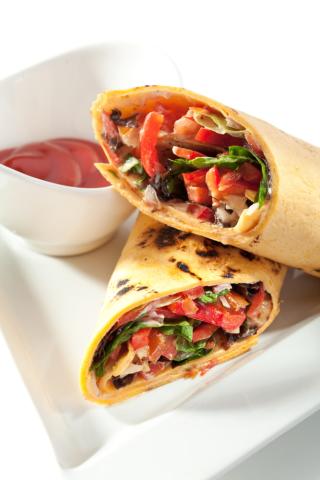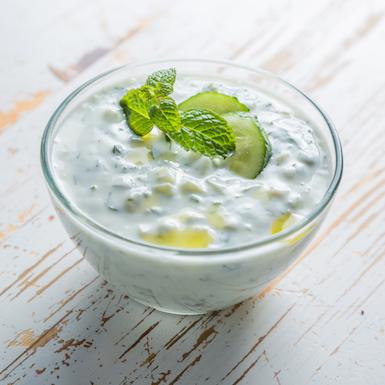- 1 ½ Cups (300g) Arborio Risotto Rice
- 2 Tablespoons (20g) Vegetable Oil
- 1 (160g) Red Pepper
- 6 (60g) Spring Onions
- 12 (180g) Cherry Tomatoes
- 4 Tablespoons (120g) Frozen Peas
- 10 (100g) Button Mushrooms
- boiling (800ml) Water
- 1 (7g) Reduced Salt Vegetable Stock Cube
- 5 Tablespoons (50g) Grated Parmesan Cheese
Ingredients
Allergy Disclaimer
Always check the label of each ingredient for allergy warnings.
Method
- Preheat the oven to 200°C / 180°C fan oven / 400°F / gas mark 6.
- Wash the pepper, spring onions and cherry tomatoes, and wipe the dirt off the mushrooms.
- De-seed and slice the pepper, slice the spring onions and mushrooms, and halve the cherry tomatoes.
- Place the peas in a sieve and thaw them by pouring hot water over them.
- Rub the oil around the inside of an ovenproof dish with a brush, piece of kitchen paper or your fingers.
- Pour the rice into the dish, followed by the pepper, spring onions, peas and mushrooms.
- Pour over the boiling water, crumble in the stock cube and mix well.
- Place the tomatoes on the top, followed by the grated cheese.
- Cover the dish with the lid or tinfoil, then bake for 20-30 minutes until the rice is tender.
- Allow the dish to stand for a few minutes before serving - it's very hot!
Time Saver Tips
Buy the cheese already grated. Chop the vegetables up to a day beforehand and store in an airtight container in the fridge, then assemble the dish when you want to cook it.
Cost Saver Tips
You can use cheaper Parmigiano Reggiano or Grana Padano cheese instead of Parmesan. Use frozen vegetables, e.g. frozen peppers, sweetcorn or mushrooms, or whatever is cheap or on offer. Courgettes, broccoli, butternut squash, leeks all work well in this dish.
Tips for Kids
Let them choose the vegetables to be used. They can stir the rice and vegetables together, and sprinkle on the tomatoes and cheese.
Nutritional Information
Based on a single serving of 393g (% of an adult's reference intake)
Energy
421 kcals ( 21 %)
1,776 kJ ( 21 %)
Fat
3.3 g ( 17 %)
Saturates
65.6 g ( %)
Sugar
6.2 g ( 7 %)
Salt
0.7 g ( 12 %)
Detailed nutritional information
| Per 100g | Per 393g serving | |
|---|---|---|
| Energy Kcals | 107 | 421 |
| Energy Kj | 452 | 1,776 |
| Protein | 3.5 g | 13.8 g |
| Total Fat | g | g |
| Saturated Fat | 0.8 g | 3.3 g |
| Carbohydrates | 16.7 g | 65.6 g |
| Total Sugars | 1.6 g | 6.2 g |
| NSP Fibre | 0.9 g | 3.5 g |
| Sodium | 73 mg | 287 mg |
| Salt | 0.2 g | 0.7 g |
Find out about nutritional labelling
Nutrition labels on the front of packaging
- Most of the big supermarkets and many food manufacturers display nutritional information on the front of pre-packed food.
- Front of pack nutrition labels provide information on the number of grams of fat, saturated fat, sugars and salt and the amount of energy (in kJ and kcal) in a serving or portion of a recipe.
- The labels also include information about reference intakes (expressed as a percentage) which are guidelines about the approximate amount of particular nutrients and energy required for a healthy diet.
- The colour coding tells you at a glance if the food has high (red), medium (amber) or low (green) amounts of fat, saturated fat, sugars and salt.
- The more greens on the label, the healthier the choice
- Amber means neither high nor low, so you can eat foods with all or mostly ambers on the label most of the time.
- Reds on the label means the food is high in that nutrient and these are the foods we should cut down on. Try to eat these foods less often and in small amounts.
Food shopping tips
If you’re trying to decide which product to choose, check to see if there's a nutrition label on the front of the pack. This will help you to quickly assess how your choices stack up. You will often find a mixture of red, amber and green colour coding for the nutrients. So when you're choosing between similar products, try to go for more greens and ambers and fewer reds if you want to make a healthier choice.
 Activities & Play
Activities & Play Behaviour
Behaviour Childcare
Childcare Development & Growing Up
Development & Growing Up Family, Friends & Relationships
Family, Friends & Relationships Feeding Your Baby
Feeding Your Baby Food & Eating
Food & Eating Health & Safety
Health & Safety Mental Health & Wellbeing
Mental Health & Wellbeing Money & Work
Money & Work Online Behaviour & Safety
Online Behaviour & Safety Pregnancy & First Days
Pregnancy & First Days School & Education
School & Education Sleep
Sleep













